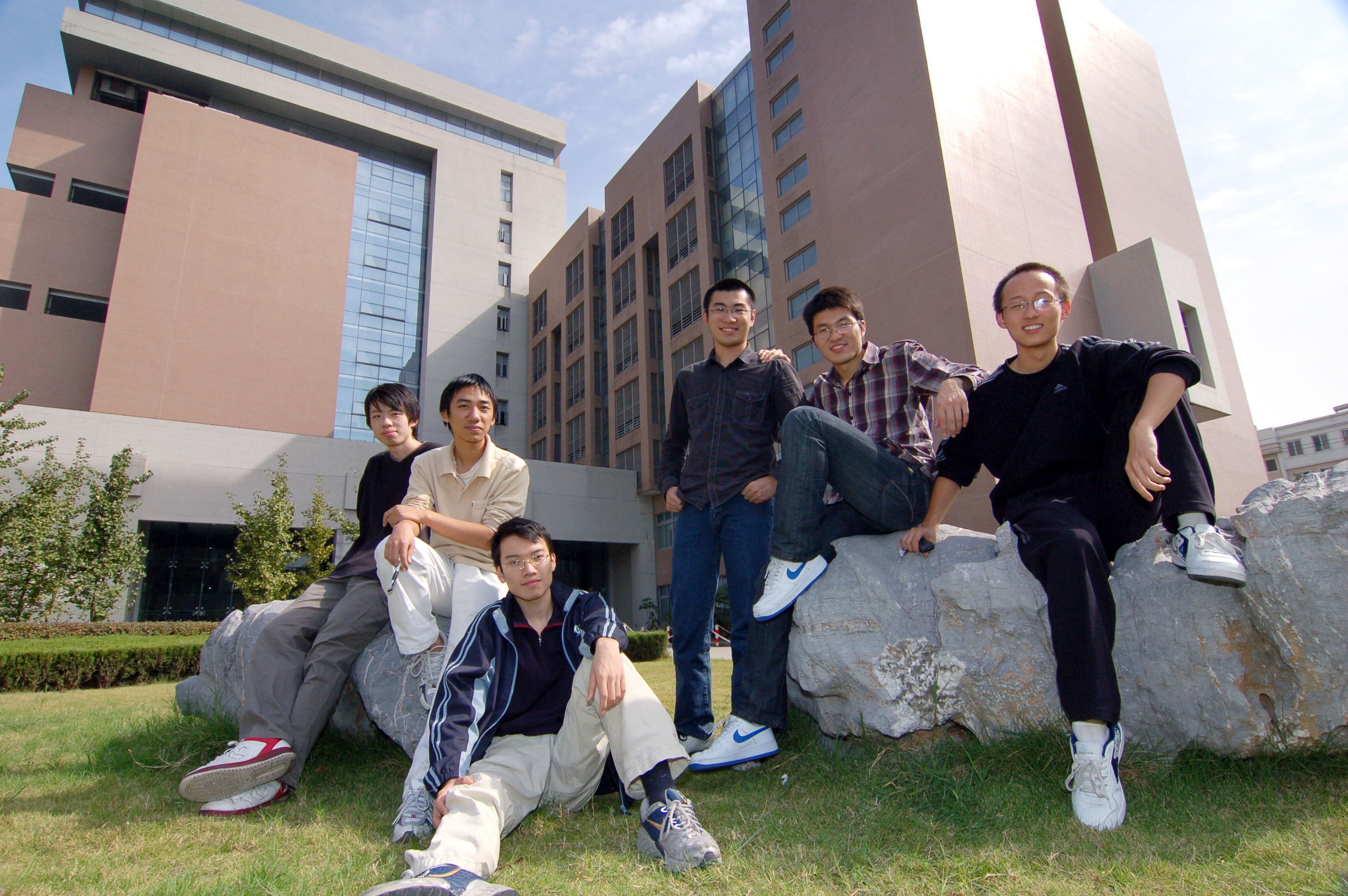Team:USTC Software/Home
From 2009.igem.org
| (21 intermediate revisions not shown) | |||
| Line 1: | Line 1: | ||
__NOTOC__ | __NOTOC__ | ||
{{USTCSW_Heading}} | {{USTCSW_Heading}} | ||
| - | {|valign = "top" | + | {|- |
| - | | | + | |valign = "top"| |
| - | + | {{USTCSW_SideBarL}} | |
| - | |valign = "top" align = "center" border = "0" width = "600px"| | + | |valign = "top" align = "center" border = "0" width = "600px" bordercolor = "#F3F3F3"| |
| - | + | {|- | |
| + | |valign = "top" align = "center" bgcolor = "#EEEEEE" width = "600px"| | ||
<font size = "5">'''Quick Start'''</font> | <font size = "5">'''Quick Start'''</font> | ||
| + | |} | ||
<br /> | <br /> | ||
| - | [[Image:USTCSW_QuickStart.png|center|500x500px]] | + | <!---[[Image:USTCSW_QuickStart.png|center|500x500px]]---> |
| + | |||
| + | <div id="placeholder" style="width: 500px; height: 500px; margin-left: auto; margin-right: auto;"> | ||
| + | {{imageMap|imap|/wiki/images/3/38/USTCSW_QuickStart1.png|510|510| | ||
| + | {{imageMapLink|wow|180|196|338|358|}} | ||
| + | {{imageMapLink|why|182|5|315|125|}} | ||
| + | {{imageMapLink|what|382|127|495|100|}} | ||
| + | {{imageMapLink|how|342|360|466|90|}} | ||
| + | {{imageMapLink|who|58|366|194|490|}} | ||
| + | {{imageMapLink|when|2|137|133|262|}} | ||
| + | <!---{{imageMapLink|wow|180|196|338|358|}}---> | ||
| + | }}<html><center> | ||
| + | <ul id="imap"> | ||
| + | <li id="wow"></html>[[Team:USTC_Software/Project]]<html></li> | ||
| + | <li id="why"></html>[[Team:USTC_Software/Why]]<html></li> | ||
| + | <li id="what"></html>[[Team:USTC_Software/WhatOverview]]<html></li> | ||
| + | <li id="how"></html>[[Team:USTC_Software/hoWDesign]]<html></li> | ||
| + | <li id="who"></html>[[Team:USTC_Software/Teammember]]<html></li> | ||
| + | <li id="when"></html>[[Team:USTC_Software/When]]<html></li> | ||
| + | <!---<li id="wow"></html>[[Team:USTC_Software/Project]]<html></li>---> | ||
| + | </ul> | ||
| + | </center></html> | ||
| + | </div> | ||
| + | |||
| + | |||
| + | <!--- | ||
| + | <imagemap> | ||
| + | Image:USTCSW_QuickStart.png| | ||
| + | |||
| + | circle 695 728 209 [[https://2009.igem.org/Team:USTC_Software/Project/#QuickTutorial|Quick Tutorial]] | ||
| + | poly 483 123 482 321 841 322 846 118 698 118 700 91 811 87 824 49 764 1 669 28 627 70 631 110 482 122 482 122 [[https://2009.igem.org/Team:USTC_Software/Why|Why]] | ||
| + | circle 179 528 160 [[https://2009.igem.org/Team:USTC_Software/When|When]] | ||
| + | poly 284 948 536 1136 430 1291 168 1114 160 1089 250 956 [[https://2009.igem.org/Team:USTC_Software/Who|Who]] | ||
| + | poly 887 1134 1085 890 1263 1024 1055 1277 1011 1261 902 1168 [[https://2009.igem.org/Team:USTC_Software/hoW|hoW]] | ||
| + | poly 1014 431 1162 706 1329 610 1331 565 1198 331 1139 333 1040 389 [[https://2009.igem.org/Team:USTC_Software/What|What]] | ||
| + | |||
| + | desc none | ||
| + | </imagemap> | ||
| + | ---> | ||
<!---[[Image:USTC_Software_logo.jpg|center|300px|thumb|Automatic Biological Circuits Design]]---> | <!---[[Image:USTC_Software_logo.jpg|center|300px|thumb|Automatic Biological Circuits Design]]---> | ||
| Line 16: | Line 56: | ||
---- | ---- | ||
| - | <font size = "3">'''the ABCs of | + | <font size = "3">'''the ABCs of Automatic Biological Circuit Design'''</font> |
---- | ---- | ||
{|- | {|- | ||
| - | |align = " | + | |align = "justify" bgcolor = "#F3F3F3"| |
| - | + | One ultimate goal of synthetic biology is to program complex biological networks that could achieve desired phenotype and produce significant metabolites in purpose of real world application, by fabricating standard components from an engineering-driven perspective. This project explores the application of theoretical approaches to automatically design synthetic complex biological networks with desired functions defined as dynamical behavior and input-output property. | |
| + | |||
| + | We propose a novel design scheme highlighted in the notion of trade-off that synthetic networks could be obtained by a compromise between performance and robustness. Moreover, series of eligible strategies, which consist of various topologies and possible standard components such as BioBricks, provide multiple choices to facilitate the wet experiment procedure. Description of all feasible solutions takes advantage of SBML and SBGN standard to guarantee extensibility and compatibility. | ||
|} | |} | ||
| - | <!--- | + | <!------> |
<font size = "3">'''The Campus'''</font> | <font size = "3">'''The Campus'''</font> | ||
| - | |||
| - | |||
| - | |||
---- | ---- | ||
{|- | {|- | ||
| - | |align = " | + | |align = "justify" bgcolor = "#F3F3F3"| |
| - | + | University of Science and Technology of China, or as we abbreviate it for USTC, locates in Hefei, east of China. It's typical subtropic continent climate here, as midsummer could be sizzling while you'll have plenty of snow to expect in winter. Like the higher education in China itself, founded in Sept 20, 1958, USTC is a young campus packed with vigorous and young faces. There are two major parts, the east campus where physical, chemical sciences and SGY locates, and the west campus where we are here endeavoring together for iGEM. Going against the prevailing trend of expanding enrollment, USTC is subject to our pride to be one of the very '''''few''''' USTCers for all these years. | |
| - | + | ||
| - | + | [[Image:USTC_Software.jpg|right|350px|thumb|Members of USTC_Software, in front of main building of School of Life Sciences]] | |
| - | + | ||
| - | + | The main building of School of Life Sciences is among the most advanced and eye-catching buildings on campus. Another reason for young guys' eyes to be caught here is due to the breakdown of USTC's characteristic guy-to-girl ratio here :-). Usually young men here will willingly (or unwillingly, anyways it never matters) leave the front row for ladies in a classroom with a typical capacity of 200 people. However here, inside the life sciences building, Goddess bless it, the ratio almost rises to 2-1! No wonder the Biology Department is always the among majors hardest to get enrolled in. | |
|} | |} | ||
| - | | | + | |valign = "top"| |
{{USTCSW_SideBarR}} | {{USTCSW_SideBarR}} | ||
|} | |} | ||
| - | + | |} | |
{{USTCSW_Foot}} | {{USTCSW_Foot}} | ||
Latest revision as of 03:26, 22 October 2009
| About | Team and People | Project | Standard | Notebook | Demo | Safety | External Links |
|---|
|
|
Project Scope the ABCs of Automatic Biological Circuit Design
The Campus
|
|
 "
"





























